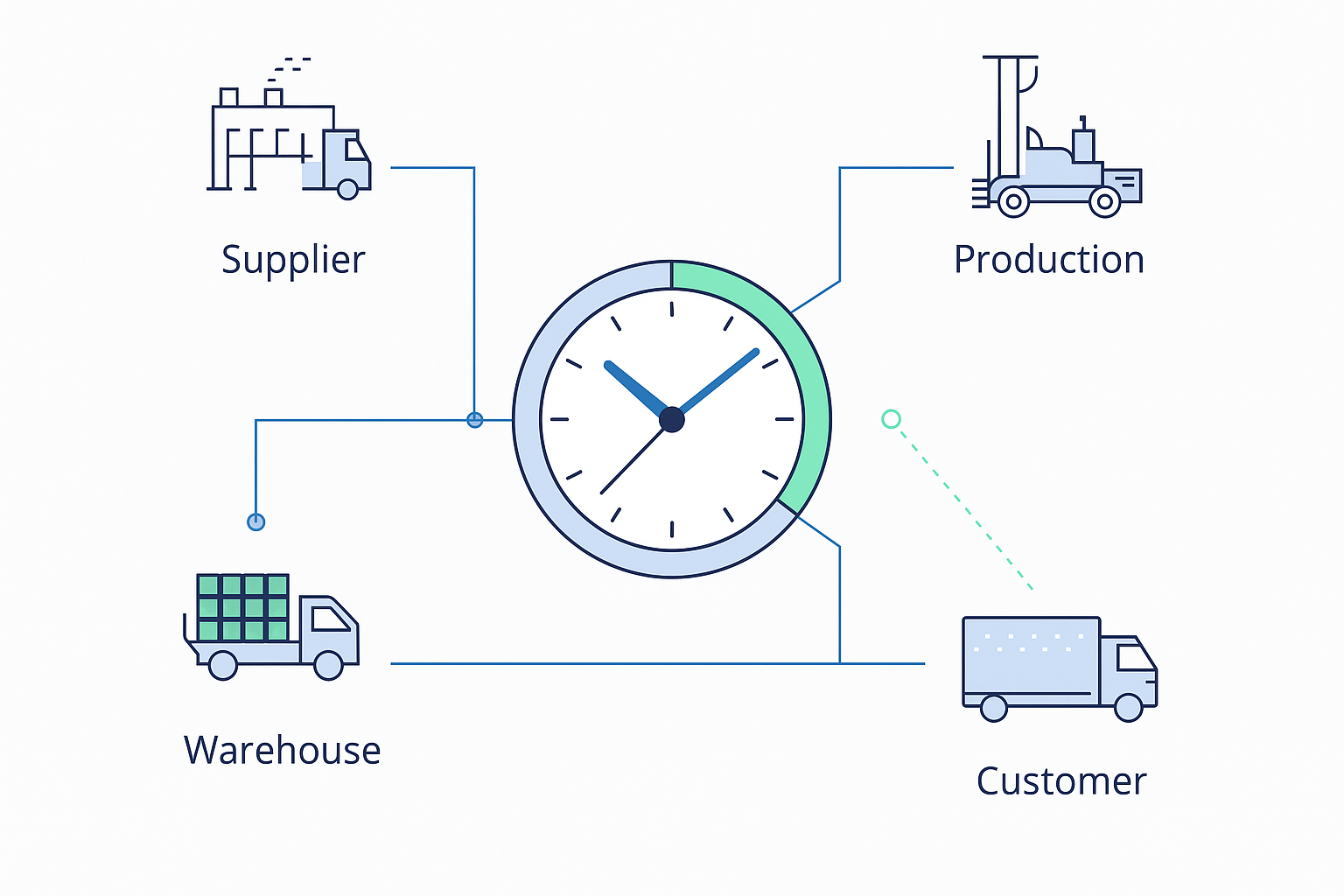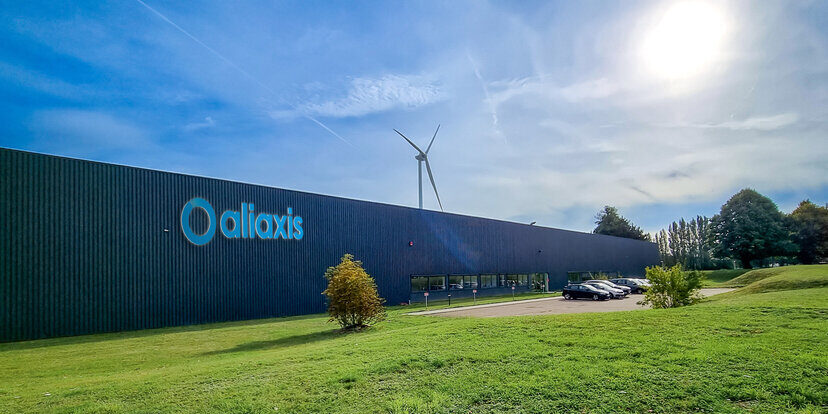We conducted research before the COVID-19 pandemic (in late 2019) to take the pulse of the supply chain network design landscape. The timing was co-incidental, but it allowed us to poll the market at a critical turning point. Nearly 3 years later, we decided to conduct a new survey to assess how the market has changed in a post-pandemic world. In this blog, part one of a two-part series, we will look at whether the supply chain network design tools in use have changed. Part two will look at maturity models and how market demands, like environmental accountability, are transforming the network design practice.
What are the supply chain network design tools in use today?
Spreadsheets and previous experience are still dominant. But we do see some improvements compared to our 2019 research. While nearly 60% of respondents used spreadsheets back then, this is now a little over 41%.
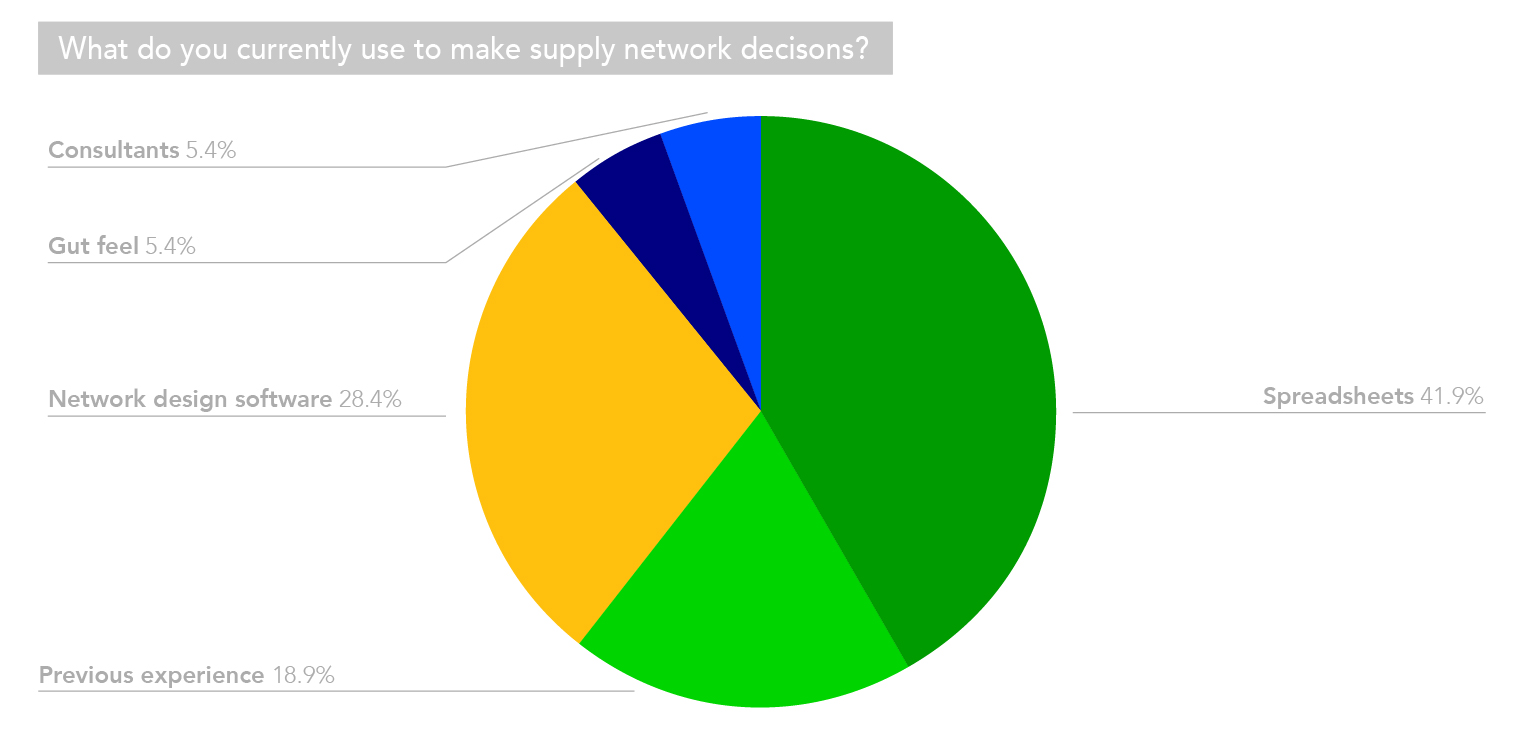
In 2019, less than 20% used network design software. Today that’s nearly 30%. Back then, 15% relied on gut feel, compared to 5% today.
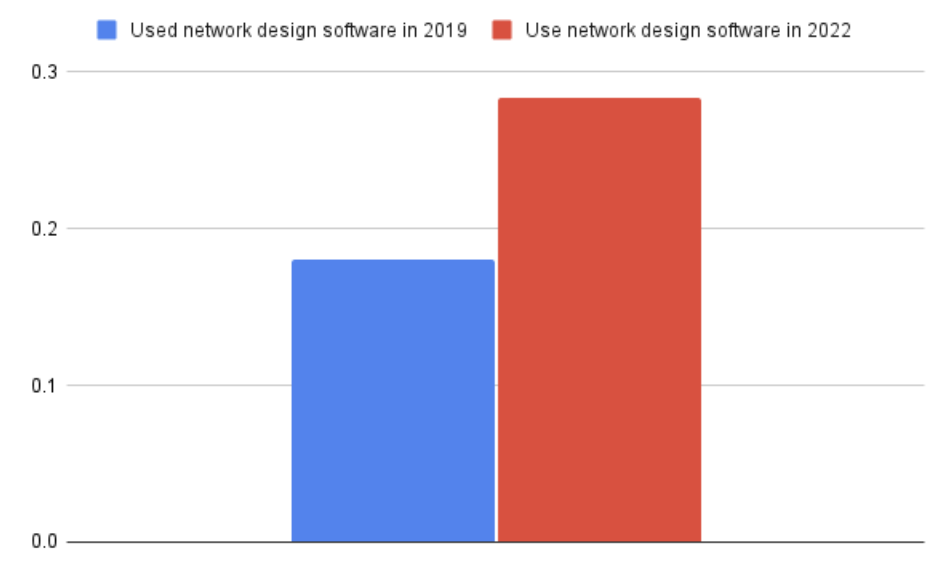
These trends signal that the market is moving away from spreadsheets and looking to embrace dedicated network design tooling.
Use of advanced analytics
Planning a supply chain network with spreadsheets is like walking a tightrope without a net. But how many organizations are using advanced analytics, like mathematical optimization and scenario planning, to better cope with uncertainty?
Back in 2019, nearly 60% were not using advanced analytics. Today, we see that’s just over 70%. While this is not the exact same group of professionals polled, this may mean that the adoption of advanced analytics is not progressing as fast.
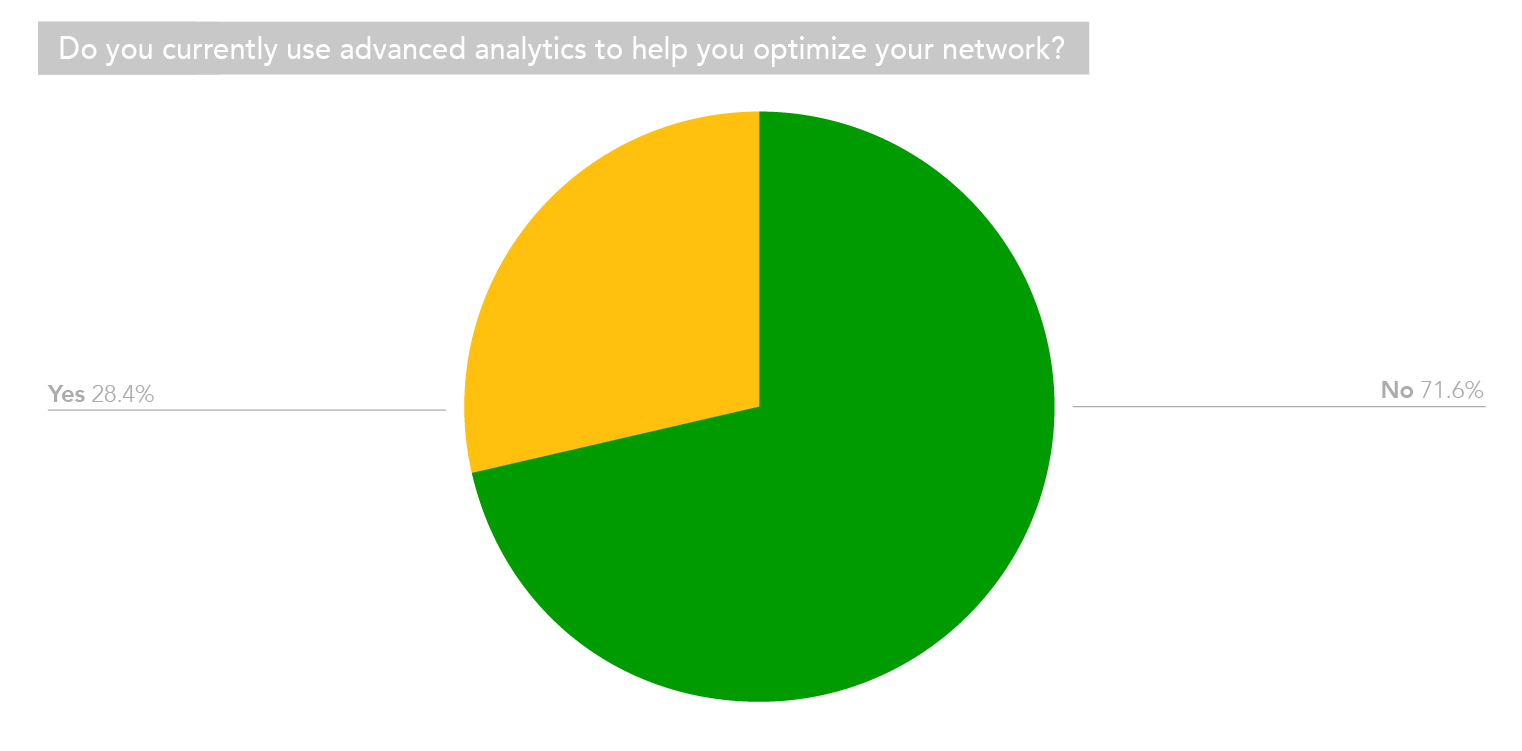
Yet, analysts like Gartner argue that network design tools with advanced capabilities like optimization and scenario analysis are critical in the supply chain design process.
Gartner explains: “Mathematical modeling can aid decision making when potentially conflicting variables, such as being cost-efficient, customer-focused and resilient in complex and sprawling networks, must be evaluated. The network design tool is used to create a model of the as-is situation (baseline), as well as several to-be situations (the scenarios), and may also be used to determine improvements in the as-is network (optimized baseline).”
“The ability to run and compare multiple scenarios and keep track of the changes, scenario to scenario, is key and enables a scalable analysis that is trusted and implementable.” (Gartner, Market Guide for Supply Chain Network Design Tools, Vicky Forman, Kamala Raman, and Pia Orup Lund, February 28,2022)
These capabilities are critical to gain decision making agility. How agile are organizations in practice?
Supply Chain Network Design Agility
Out of all 2022 respondents, nearly 22% look at their network continuously for improvements.
23% of respondents look at their network every few years. This was also the case in 2019.
A combined 45% do this annually or quarterly. Back in 2019, 52% looked at their network annually or quarterly, so we do see advancement when it comes to agility.
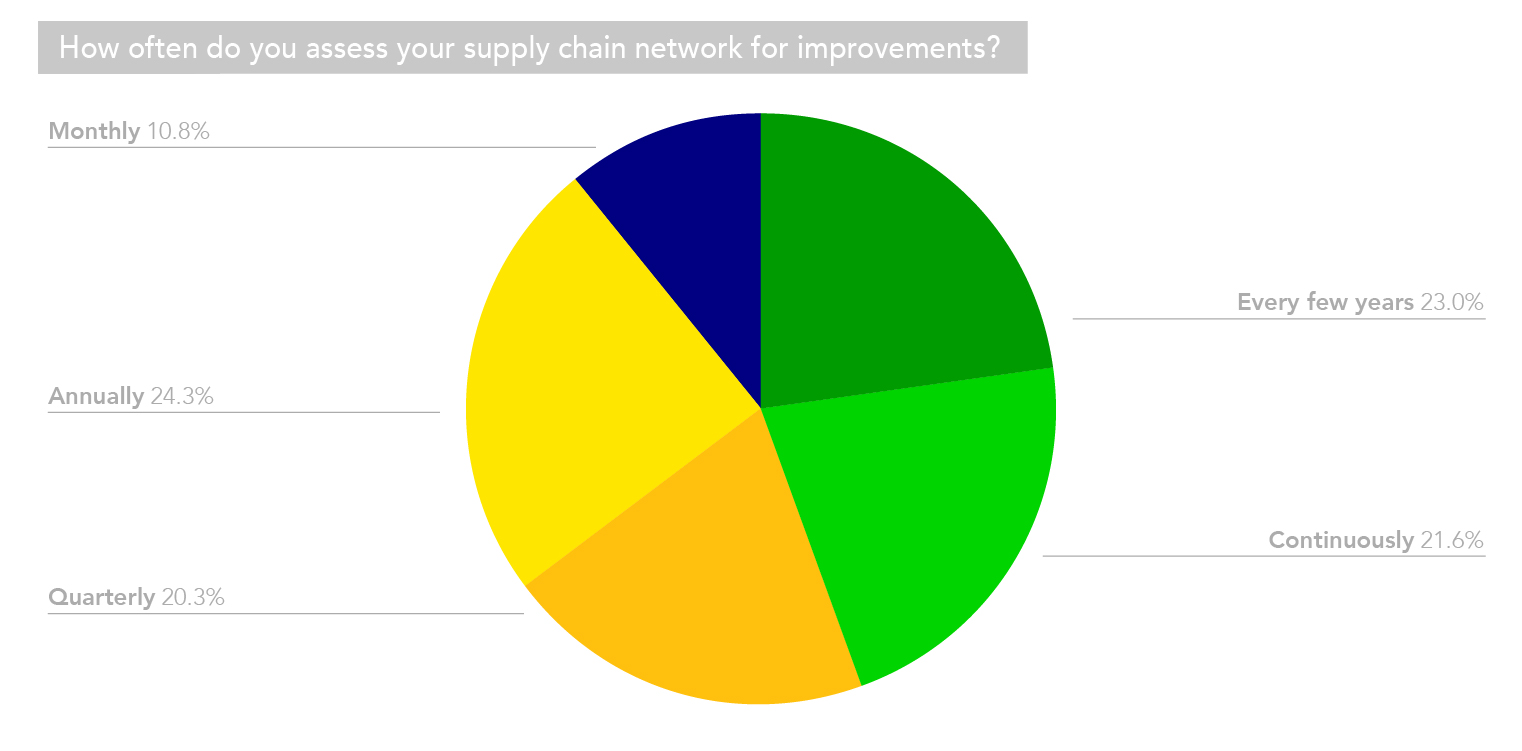
But organizations may not be agile enough. This could be because it takes too long to get the answers they need. A combined 58% said it takes months or weeks. Only 33% get answers in days; 8% gets answers immediately.
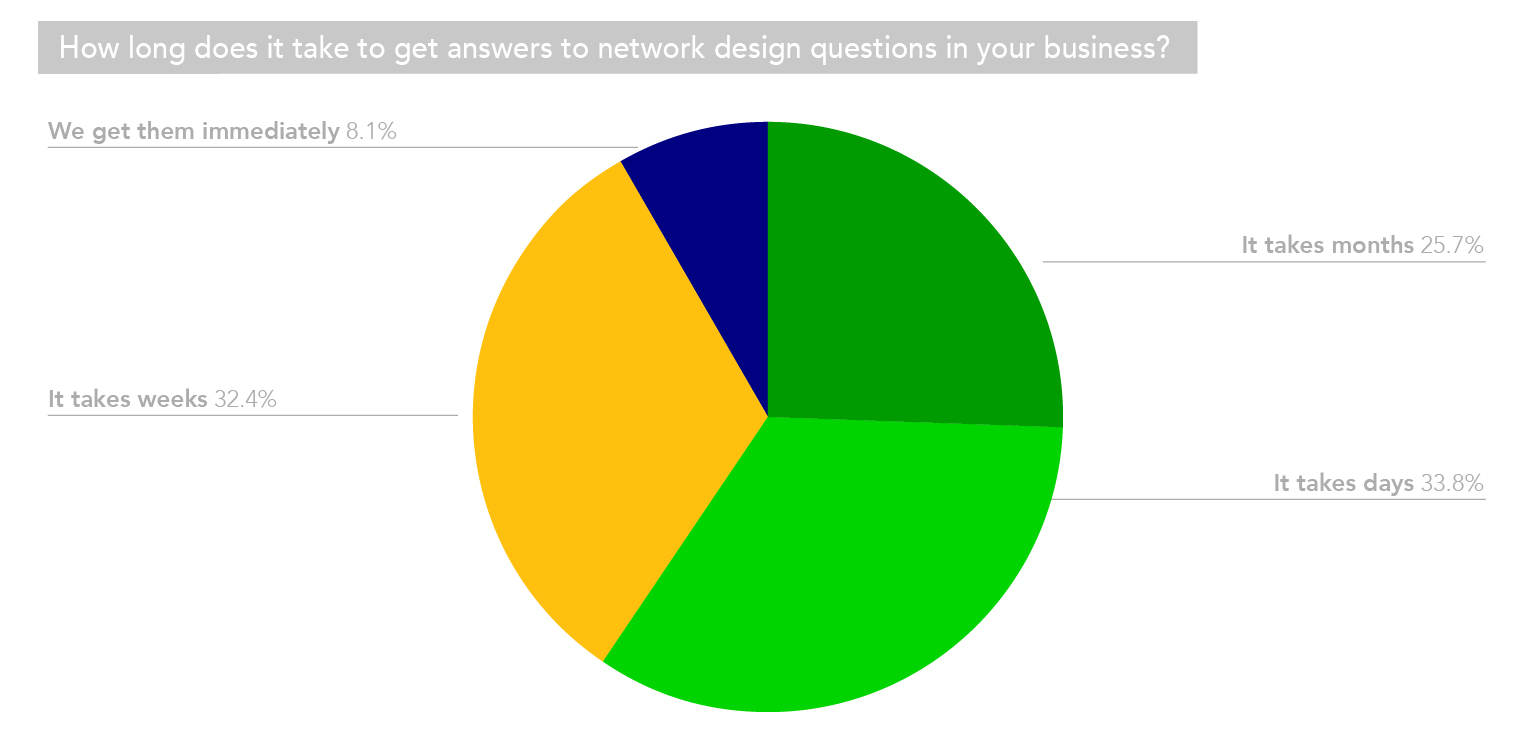
This was roughly the same in 2019. Back then, 30% of people told us they got answers in days. The majority said it took weeks (38%).
Technology has a big impact on supply chain agility
Today, 90% of those who get answers immediately use dedicated network design software. The majority of those who take weeks or months to get answers use spreadsheets and previous experience.
Those who are equipped with dedicated network design tools are better equipped to make informed decisions faster. This is very important today, as the scope of network design is changing. Supply chain decision makers are not only expected to maintain high service levels at the lowest possible cost. They also need to incorporate sustainability trade-offs, and they need to constantly relook at their network to adapt in response to disruptions. But doing this with spreadsheets is hard to say the least.
Stay tuned for more supply chain design maturity insights
In the next part of this series, we will look at different perceptions on network design maturity. We will also explore different implementation models and the adoption of non-financial objectives, like carbon emission modeling.
Get the full report
Want this and more insights on network design? Download the full research report.



